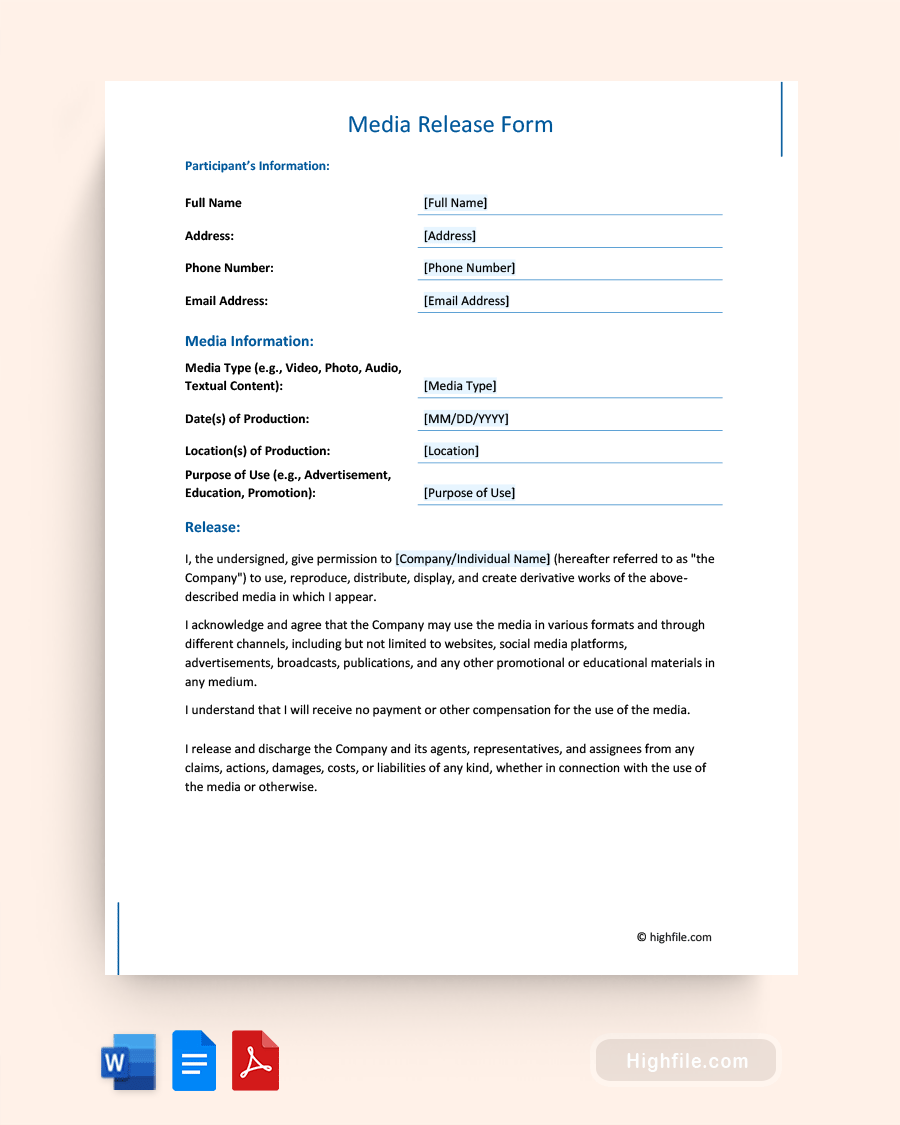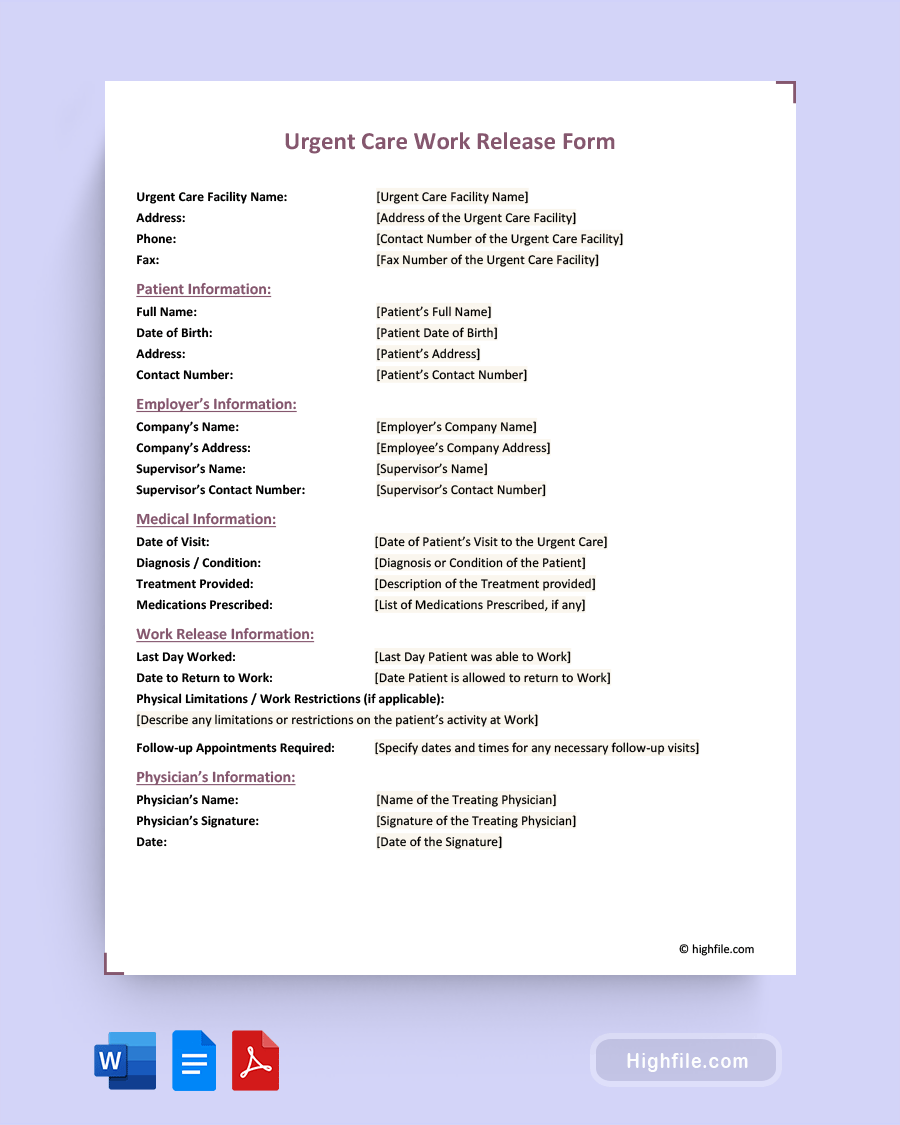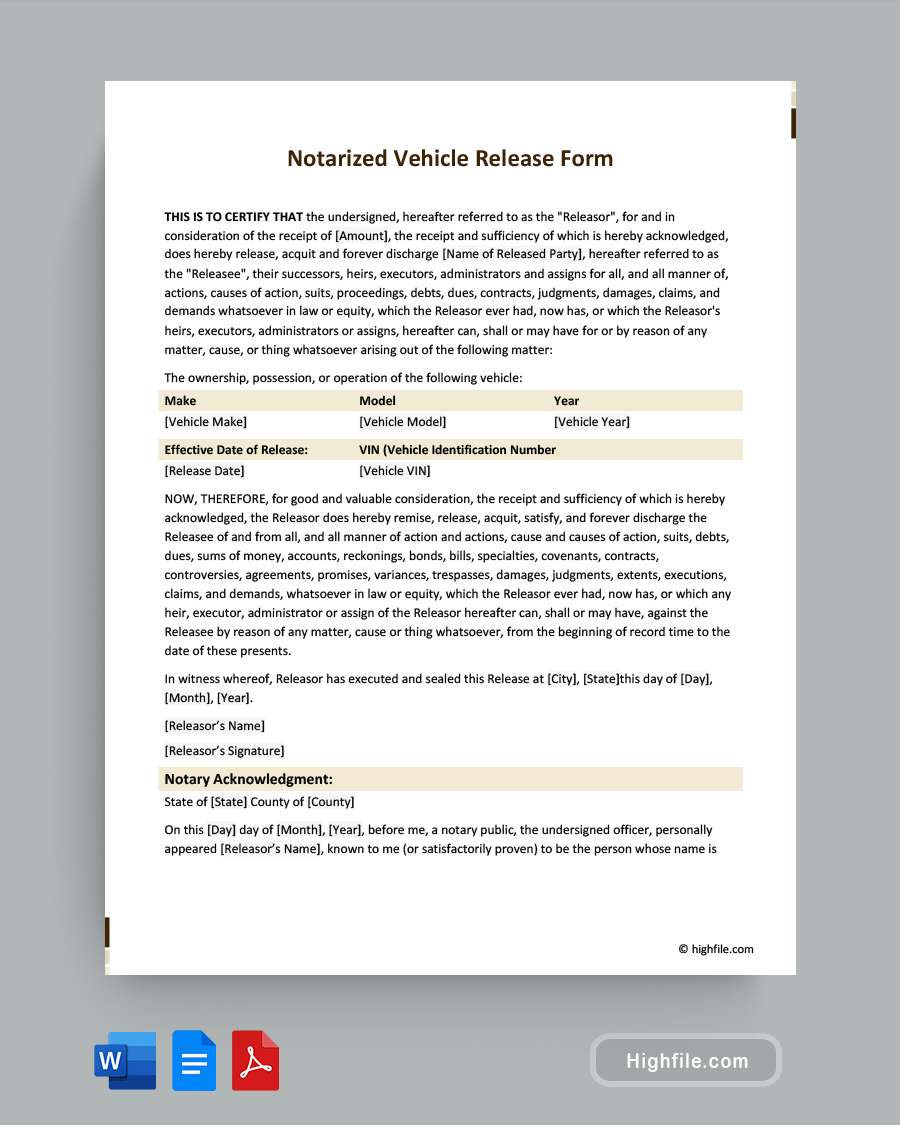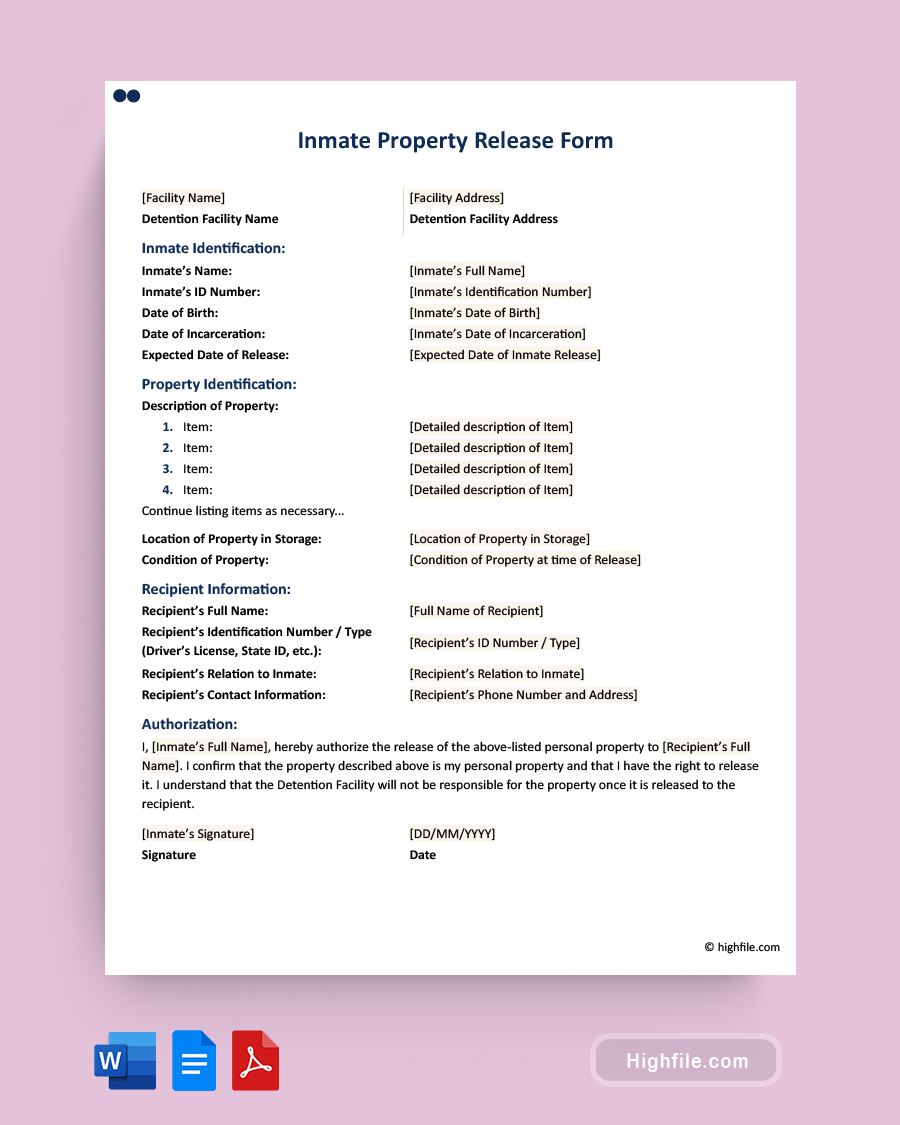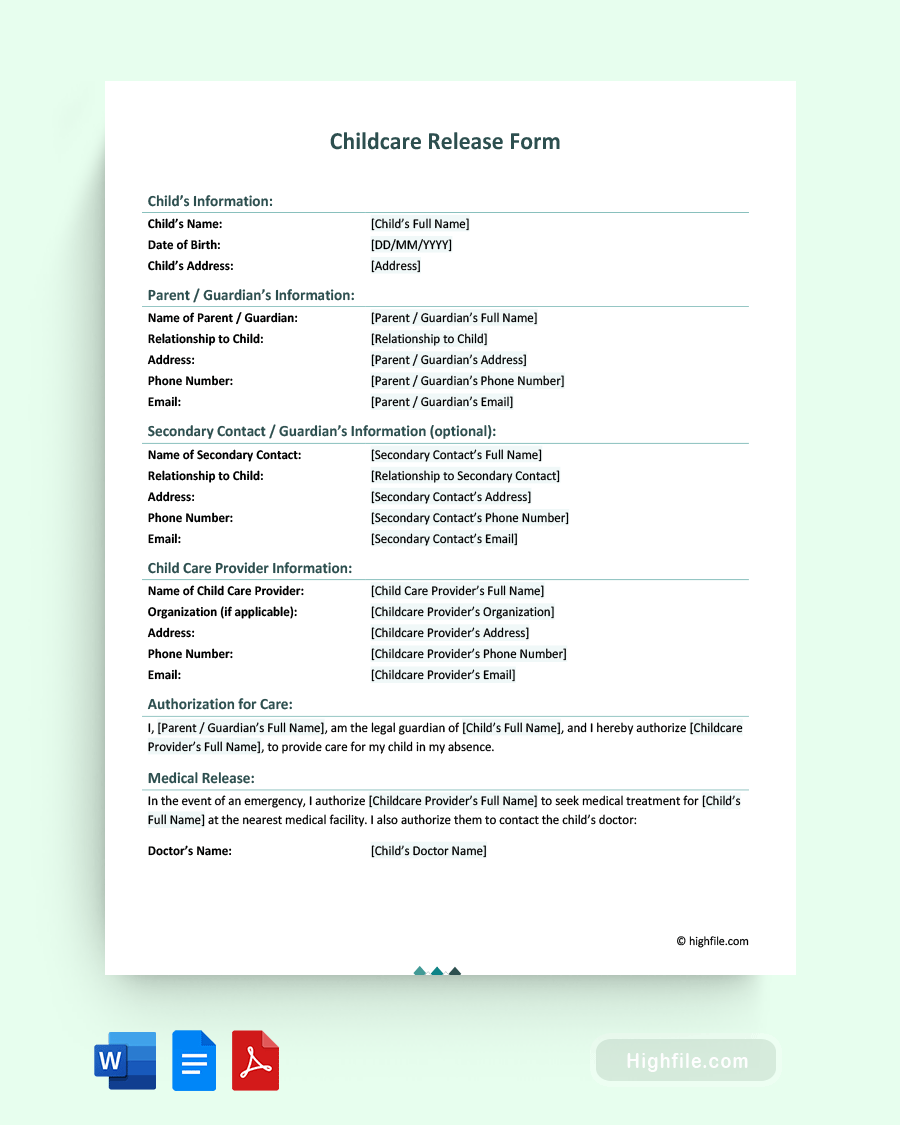Media Release Forms are critical for photographers, videographers, documentarians, and businesses who need promotional and advertisement images. These vital legal documents grant permission to use an individual’s image, voice, or likeness in media-related projects. By having a high-quality, professional Media Release Form you can save time, ensure proper consent, and protect the rights of both the individuals involved and the organizations using the media. Creating these forms from scratch can be challenging. Fortunately, our Media Release Form template can streamline the process and provide a solid foundation for generating outstanding, legally sound Media Release Forms. In this article, we will teach you everything you need to know about how to use a Media Release Forms Template to get proper consent from your subjects.
What Is a Media Release Form?
A media release form is a document that gives consent to a business or individual who wants to use photos or recordings of a subject in media-related projects. These forms outline the terms and conditions for when and how a person’s likeness can be used and distributed. They are typically used by organizations, like media outlets, production companies, and event organizers to make promotional material, displays, or advertisements that are shown to the public.
Fun Fact: Did you know that some media release forms have been ‘signed’ by animals? While these humorous documents wouldn’t hold up in court since animals don’t have the legal right to create binding contracts, it does help bring a little levity to a serious issue. Every participant, regardless of their species, deserves to be treated with respect, and that includes getting their consent, or the owner’s consent, when possible.
Why Is Media Release Form Important?
A media release form is important for many reasons. For example, they can be used in court if the rights to certain images or recordings are in question. Here are all the other reasons you need these critical documents:
To convert the bullet points into a list with the first heading of each point bold, you can use the following format:
- Shows that individuals have given their informed consent for their image or likeness to be used in media projects
- Protects the individuals and the organizations involved by clarifying the permissions granted and reducing the risk of legal issues related to the unauthorized use
- Provides a record of the agreement between the parties
- Helps maintain transparency and trust
- Establishes the scope and purpose of the media usage, by outlining specific terms
- Protects privacy rights of individuals by allowing them to control how their image or likeness is used
- Sets clear guidelines and expectations regarding the use of someone’s image or likeness
- Ensures the parents or guardians of a minor are informed and give consent before recording or distributing media when children are part of the project
Important Note: Showing respect, not only to individuals’ personal feelings and abilities, but also to their culture, and (when applicable) religion, is critical when distributing media in any form. A little bit of common sense and courtesy help us create a more inclusive, diverse, and accessible environment for all participants.
Essential Elements of Media Release Form
Before you use someone’s likeness, image, voice, or other identifiable characteristics in media productions or promotional materials you should always have them sign a release form. Here are the essential elements you should expect to find in a professional template and why they are important to include:
- Document Title: A clear and descriptive title identifies the document at a glance.
- Participant Information: The name, phone number, email, and address of the person being filmed or photographed.
- Media Information: Specifies the type of media, production dates, locations, and purpose of use for the participant’s likeness.
- Release Statements: Grants permissions, outlines compensation details even when no compensation is included, and releases the organization from liability.
- Participant Signature and Date Lines: Here, the participant signs and dates the form, indicates consent, and creates a contract for the right to use their image.
- (For Minors) Parent/Guardian Signature and Date Lines: Minors need a parent or guardian to sign for them.
- Witness Information and Signature: A witness’s signature and contact details verify the document’s authenticity and parties’ consent.
- Keep For Statement: Indicates the duration for which the organization will retain a copy of the signed form.
Pro Tip: In many cases you can include an “Evergreen Clause,” when gaining consent through a media release form. When properly composed, this allows you to reuse the images for future projects so long as the subject understands what they are agreeing to before they sign. It’s best to consult a contract attorney for legal advice on how to compose this type of clause so that it will be legally binding.
FAQs
A digital signature on a media release form can be legally binding, but only when the proper conditions are met. The specific requirements for a legally binding digital signature varies depending on the jurisdiction. However, in general, the signature should be verifiable, attached to the relevant document, and indicate the signer’s consent, comprehension, and intent. While digital signature technology has evolved to provide secure and legally recognized methods of obtaining consent and agreement electronically, it is not yet universally accepted, so be sure to check the local laws before allowing your subjects to e-sign.
The usage terms specified in a media release form should not be changed after it is signed. Unfortunately, doing so could undermine the consent given by the subject. However, it is possible when both parties agree to modify the terms. It is important to communicate any changes promptly and seek mutual understanding to maintain the trust and integrity of the agreement. Moreover, you will need a signed (possibly witnessed) addendum or a new agreement.
In collaborative media projects, a media release form is how you establish a framework that respects the rights and contributions of all the participants. Every individual should sign a separate media release form granting permission for the use of their likeness, intellectual property, or creative contributions in the collaborative work. Doing this helps prevent disputes or conflicts that may arise regarding ownership, attribution, or the use of the end product. Your document should clearly define the roles and responsibilities of each participant, specify the rights granted to each individual, and outline the terms and conditions for when, where, and how the collaborative media will be used and distributed. By obtaining individual consent through media release forms, the project organizers can ensure that everyone is aware of and has agreed to the specific terms of the project. In short, it provides clarity and transparency and promotes trust and responsibility.
Key Points
Media Release Forms are indispensable for obtaining consent and legally protecting the rights of people and entities involved in media projects. By using our template to create your release forms, you can save time, ensure consistency, obtain informed consent, and minimize the risk of overlooking crucial details or legal requirements. Whatever your role in media production, having well-crafted and standardized Media Release Forms will enhance your professionalism, help you maintain transparency, and foster trust with the people whose images or likenesses you use. Remember to customize the template to meet your specific needs and seek legal advice if necessary. that way you can focus on your creative endeavors while ensuring compliance with the legal and ethical standards in the media industry.
